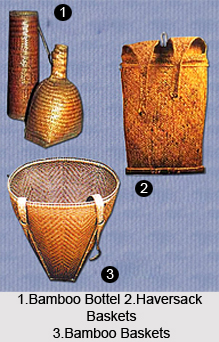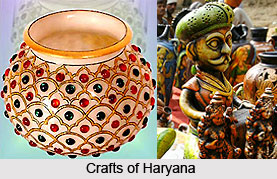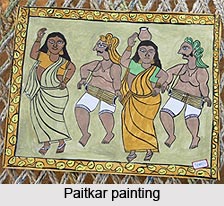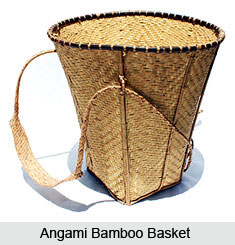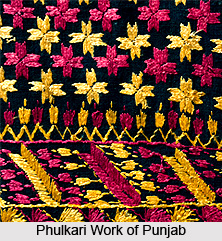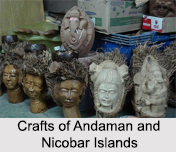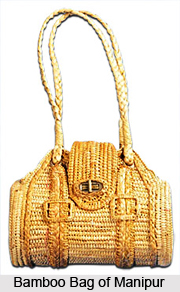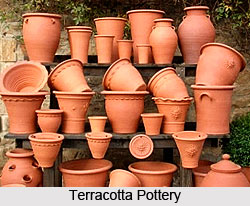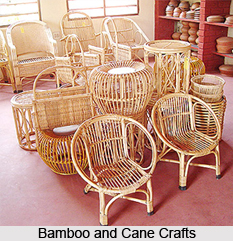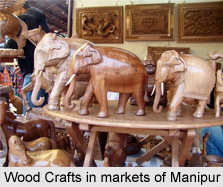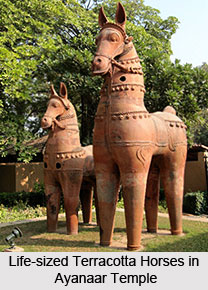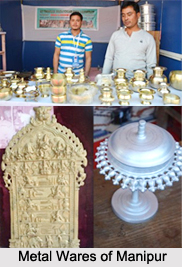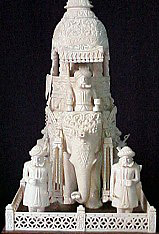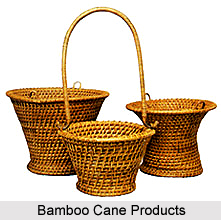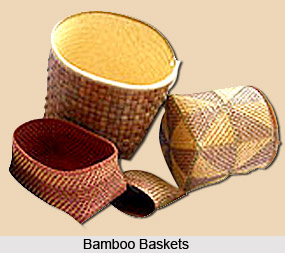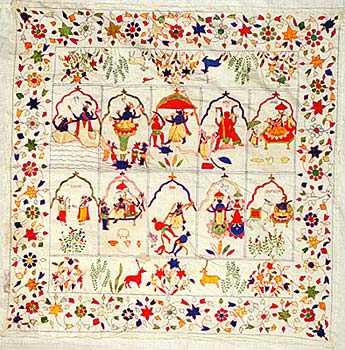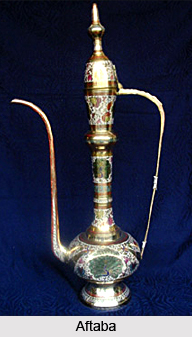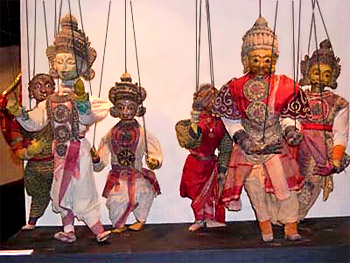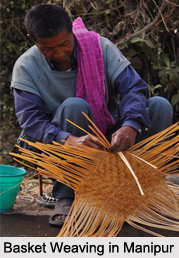 The craftsmen of Manipur make baskets by cutting up whole bamboo poles into several pieces, usually about a metre long, as per the necessary requirements. The cut pieces are then split vertically into two. The split halves are again split vertically into two, thus forming four bamboo splits what are termed as Wachets. Thereafter, the glucy layer on the inner surface is removed. While the bamboo is still wet, the hard outer layer or skin is removed by scrapping with the machete termed as Thangjou, a broad and heavy knife used as an implement. The protruding parts on the nodes are also removed. The Wachet is further split vertically into two, the split halves of which are again split vertically into two. Each of the four bamboo splits thus formed is referred to as Hanggel Tao. Again, the Hanggel Tao is split vertically into two. The split halves are further split into two to form the Paynshis. Each of the four Payashis is then finely knifed uniformly, after which they are simply referred to as Paya. The Payas are the ones directly utilised for making baskets, or, as in some cases, they are stored up on the Lup, i.e., scaffolds suspended over the fire place, for some period, so as to condition them from getting spoiled by stem borers. The conditioned Payas are mainly used for making baskets in the close weave pattern. These baskets are usually spongy.
The craftsmen of Manipur make baskets by cutting up whole bamboo poles into several pieces, usually about a metre long, as per the necessary requirements. The cut pieces are then split vertically into two. The split halves are again split vertically into two, thus forming four bamboo splits what are termed as Wachets. Thereafter, the glucy layer on the inner surface is removed. While the bamboo is still wet, the hard outer layer or skin is removed by scrapping with the machete termed as Thangjou, a broad and heavy knife used as an implement. The protruding parts on the nodes are also removed. The Wachet is further split vertically into two, the split halves of which are again split vertically into two. Each of the four bamboo splits thus formed is referred to as Hanggel Tao. Again, the Hanggel Tao is split vertically into two. The split halves are further split into two to form the Paynshis. Each of the four Payashis is then finely knifed uniformly, after which they are simply referred to as Paya. The Payas are the ones directly utilised for making baskets, or, as in some cases, they are stored up on the Lup, i.e., scaffolds suspended over the fire place, for some period, so as to condition them from getting spoiled by stem borers. The conditioned Payas are mainly used for making baskets in the close weave pattern. These baskets are usually spongy.
Besides the Paya, there is another variety of fine bamboo split known as Kanam Paya. In the case of Paya, the hard outer layer is removed. For the Kanam Paya however, it is left untouched. According to purpose of use, so much of the inner layer of the Kanam Paya is removed as necessary. The Kanam Paya is used in making varied baskets woven in the pattern of diagonals filled into the texture of open hexagonal weave. It provides a strengthening support to the baskets. Naturally enough, the baskets woven with the Kanam Paya are usually strong and stiff.
Small Pajengs or fine bamboo sticks are chopped off vertically from a Hanggel Tao, and are used in making fish traps such as Taothum, Kabo lu etc. The Hanggel Tao is split horizontally into several pieces for making fish traps such as the Taijep, Soralu etc. The split pieces are scrapped with Thangjous to make them cylindrical in forms, and are then used into making the traps. These cylindrical split forms are termed as Lushit.
The techniques employed in Manipur in making baskets that are currently in use, fall into two broad categories. First, the Payas are weaved in the pattern of cross diagonals. The weave is started and finished on the length of the same Paya, i.e., the Paya with which the weave is initially started is utilised till the weave completes. The second technique involves weaving the Payas vertically as a first step, and then to weave them horizontally. The second set of Payas is interwoven between the vertically woven Payas.
The baskets that are woven employing the first technique have weaves that are quite flexible and can be stretched up or down as desired. For this reason, this particular technique is specially utilised for making baskets with lids. Sometimes, however, skilled craftsmen make limited number of carrying baskets and container baskets using this pattern of weaving. The second weaving technique is mainly employed in making container baskets, carrying baskets, storage baskets (with double weave), to strengthen the base of all such varieties. Two sticks are placed in cross-diagonals on the base, with the tip of each hidden into the weave. To ensure that the tips of sticks do not come loose, they are tightly bound in various ways with cane splits. Baskets with lids are also provided with such criss-crossed sticks on both the base and the lids. Here, too, the tips of the sticks are hidden into the weave and tightly bound with cane splits. Both the base and the lid of some of the baskets that are used by the Tangkhul Nagas of Manipur, have additional sticks arranged on the rim, usually four sticks forming a square rim, an addition to the basic two sticks placed in cross-diagonals. The sticks are meant to strengthen the structure. In the case of baskets with lids, the rim of the lid is strengthened with an additional weave which is actually a flap of the main weave.
At the time of making the baskets, the craftsmen use a particular implement called Sanggai. It is a carving knife having a long bamboo handle with a short, sharp edged but slightly curved blade. More commonly used in the valley, it is also used in some of the areas in the hills, though people in the hills generally use the Thangjou in their basket weaving. Another implement that the craftsmen use is a small iron rod with a sharp pointed tip, used for tying or binding cane splits to the baskets whenever needed.
For weaving baskets, the basic Paya is obtained from the Unan bamboo (Dendrocalamus strictus) is used. Paya obtained from the Utang bamboo is used in making open weave baskets like the Polang and the Yangkok. In the hills, the Uei (Dendrocalamus sericeus) and the Unap bamboo are used for making close weave baskets like the Thinmok.
Related Articles:
Bamboo, Indian Plant
Bamboo Crafts in India
Bamboo and Cane Crafts of Manipur
Manipur
Crafts of Manipur
Baskets
Weaving and Dyeing Craft
Cane Craft
Tangkhul Tribe
Tribes of Manipur, Indian Tribals
